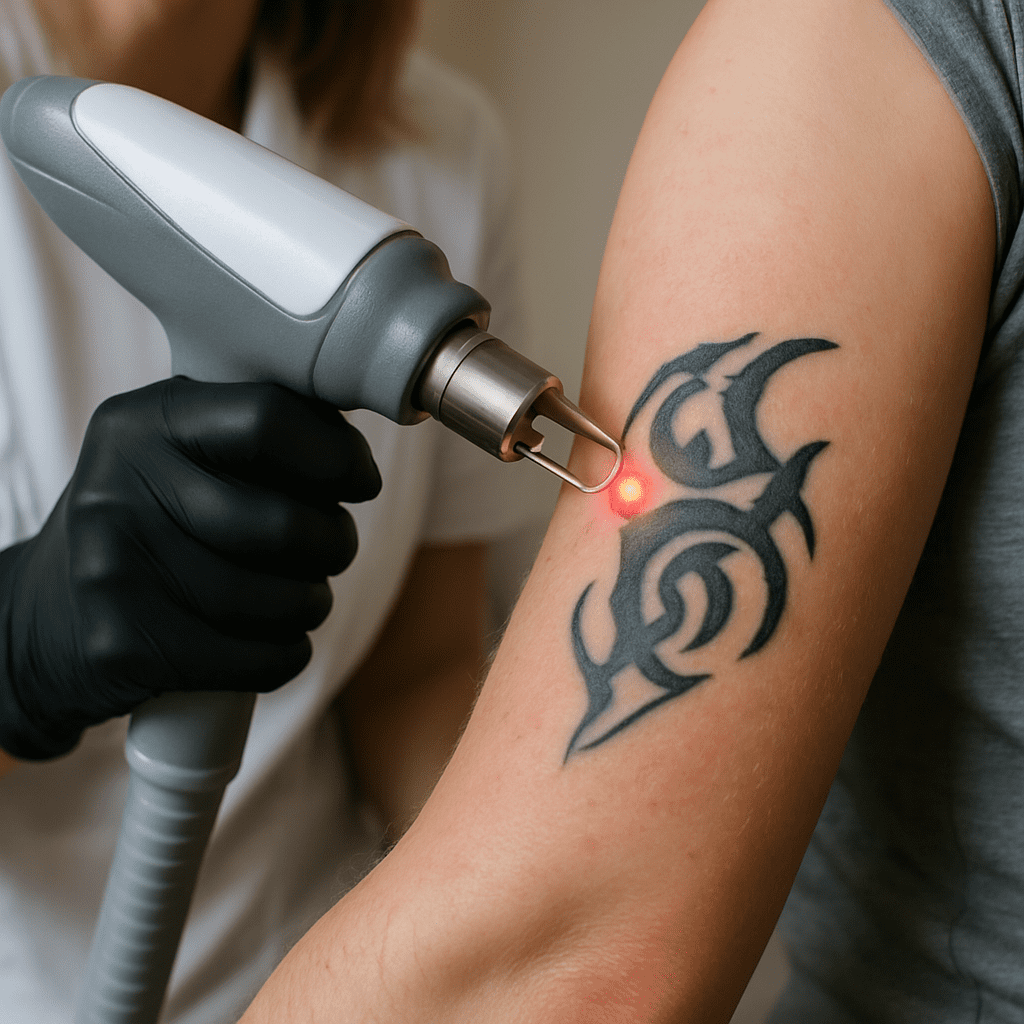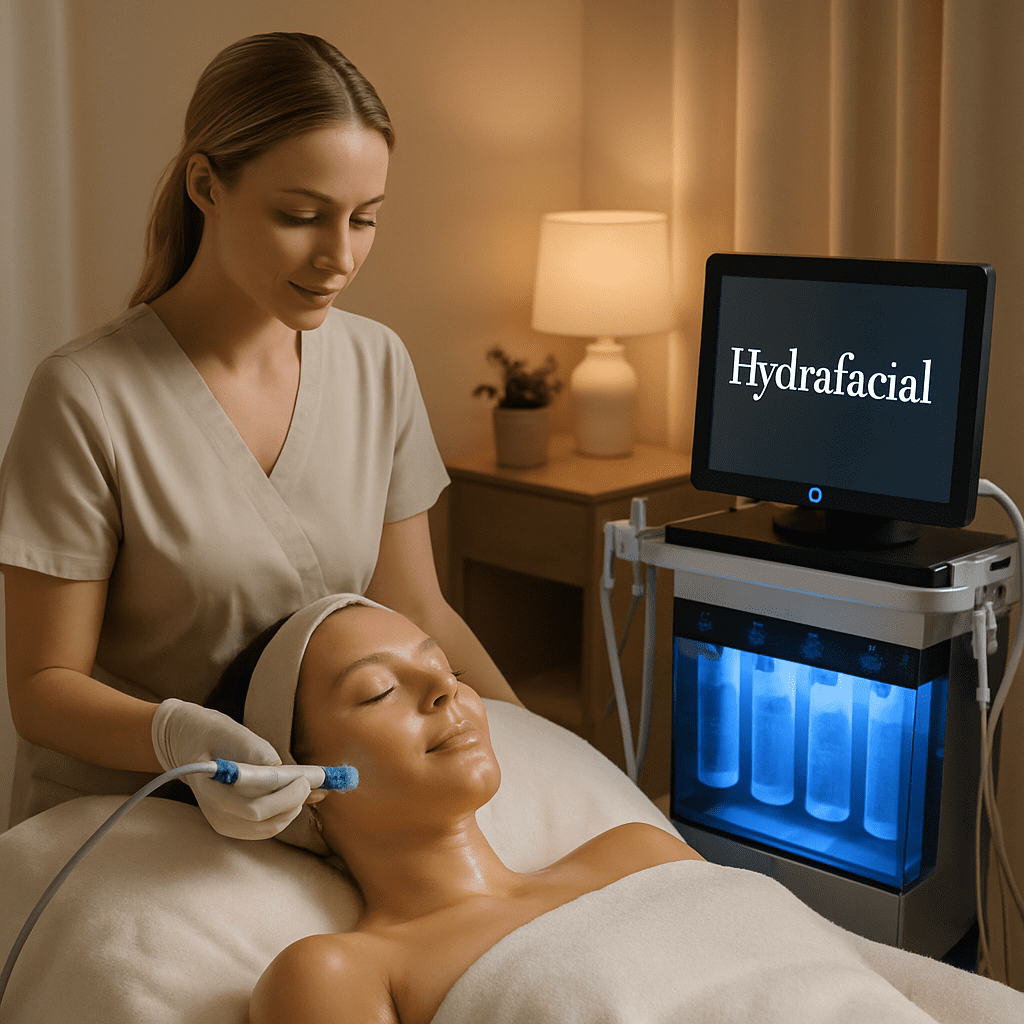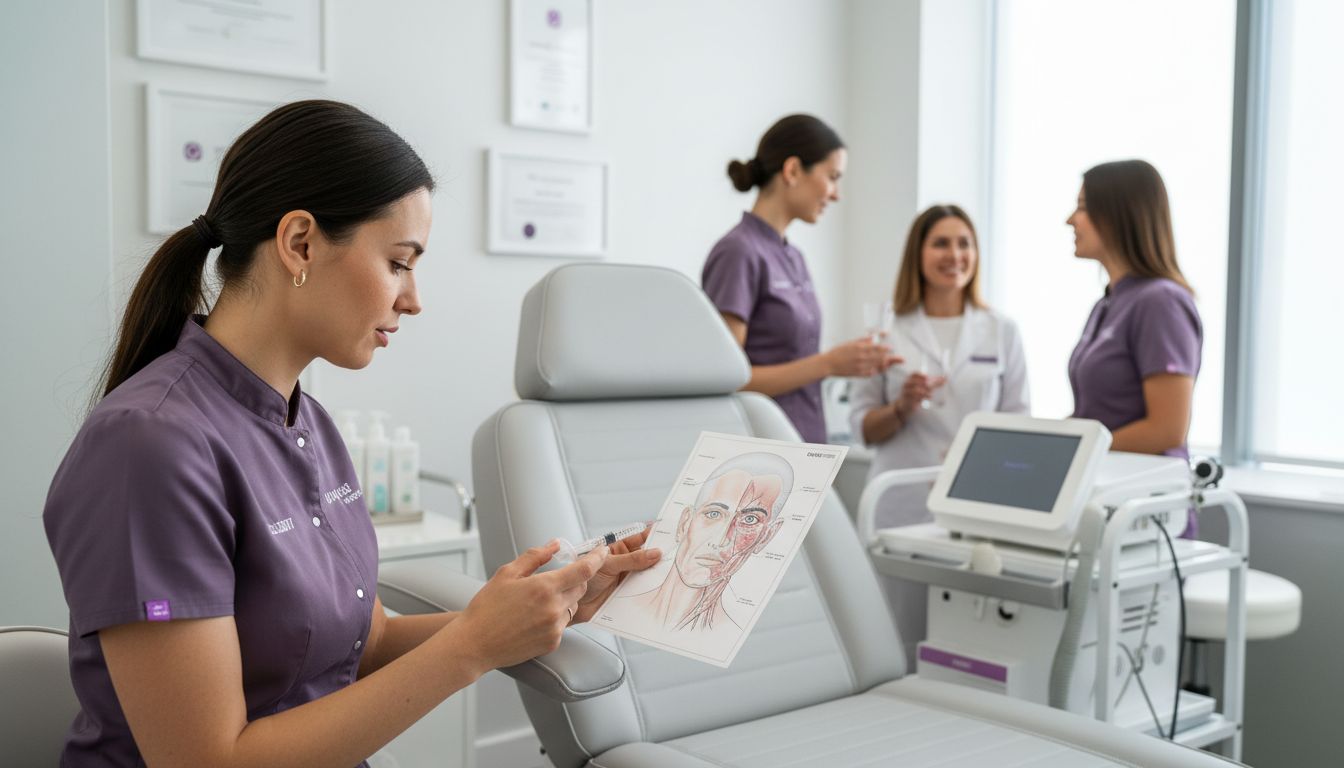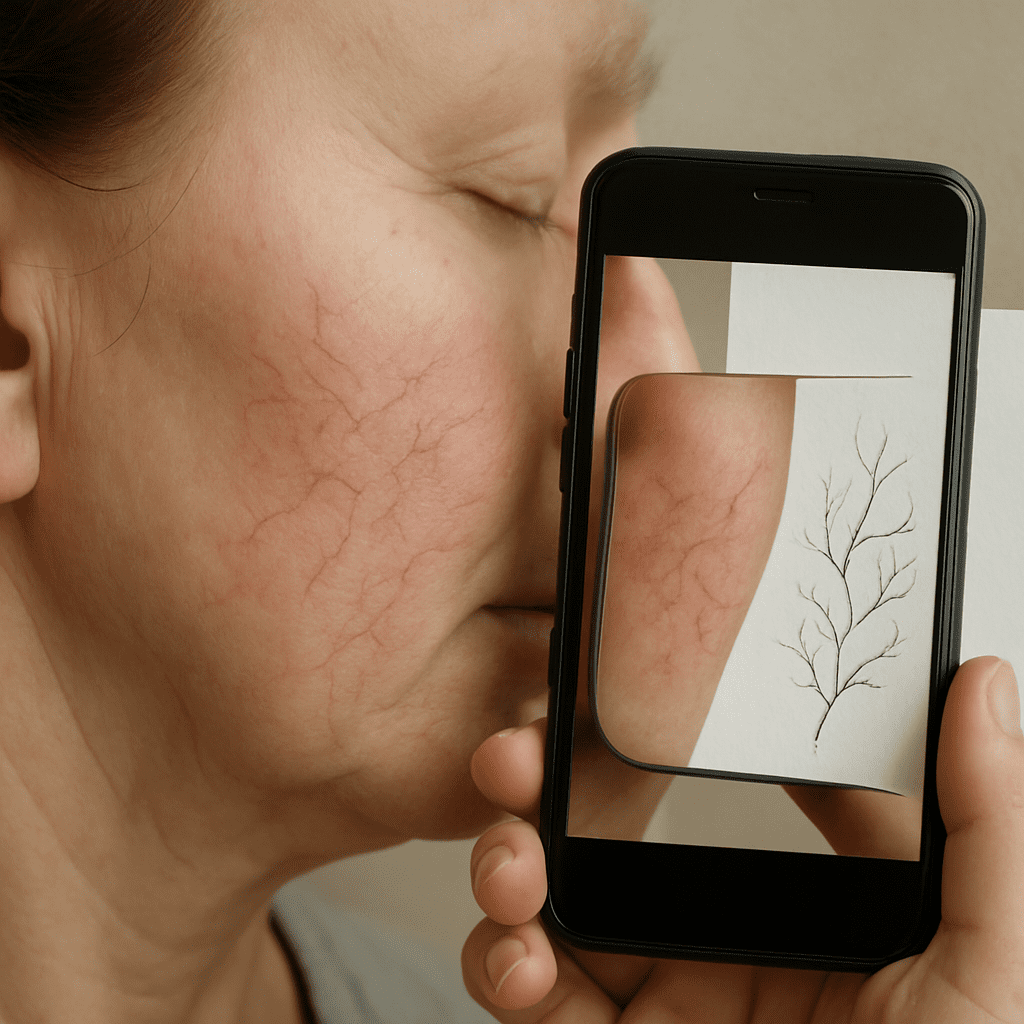Is laser tattoo removal painful? If you’ve ever stared at a tattoo you regret and wondered about erasing it, this question probably haunts you. Because, honestly, who wants to trade one kind of discomfort for another?
But here’s the thing — pain is such a personal experience. What feels like a mild snap to one person might feel like a relentless sting to another. The sensation during laser tattoo removal often depends on a handful of things: the size and color of your tattoo, the location on your body, your pain tolerance, and even how relaxed you are going in.
Think about that moment when you accidentally brush up against a candle flame—there’s a sharp pang that lingers but quickly fades. Many describe laser tattoo removal as a feeling similar to that. Others compare it to the snap of a rubber band against the skin, repeated rapidly. It’s not exactly a spa day, sure, but it’s usually manageable, especially with the right clinic and techniques.
Now, you might be wondering, “Are there ways to make it less painful?” Absolutely. Clinics like Simcoe Cosmetic Clinic prioritize your comfort by offering numbing creams and tailored approaches to ensure the process feels as gentle as possible. It’s not about toughing it out blindly; it’s about smart care and support.
Does that mean it’s a walk in the park? Probably not. But for many, the relief of seeing ink fade away is worth those fleeting moments of discomfort. If you’re curious to learn more about how laser treatments can be personalized for you, check out the insights on laser treatments at Simcoe Cosmetic Clinic.
Here’s what I suggest: Before booking anything, think about your pain threshold honestly and chat with a specialist about everything you’d want during your sessions. It’s your skin, your story—and it deserves careful handling. Let’s dive in and unpack what to expect, so you can decide with confidence.
TL;DR
Is laser tattoo removal painful? Most folks say it’s a sharp snap, kind of like a rubber band flicking your skin—uncomfortable but usually manageable.
With the right clinic offering numbing options, you can ease that sting enough to focus on the cool part: watching your tattoo fade away for good.
How Painful Is Laser Tattoo Removal? Factors That Influence the Sensation
Is laser tattoo removal painful? That question lingers in the minds of many before taking the plunge into erasing unwanted ink. And honestly, it’s natural to wonder how much discomfort you’ll have to endure. After all, no one wants to trade one kind of pain for another, right?
Here’s the thing: laser tattoo removal is often described as feeling like a quick snap of a rubber band against your skin. It stings, sure, but it’s usually manageable. For many people, it’s actually less painful than getting the tattoo itself. Think about that moment when you felt the needle on your skin — laser removal is often milder than that.
What Makes It Hurt (Or Not)?
Several factors play a big role in how much it hurts during laser tattoo removal. Let’s unpack them so you know what might affect your experience.
Tattoo Location Matters
Ever noticed some spots on your body just hurt more than others? It’s the same with laser tattoo removal. Areas where your skin is thin and close to the bone — like ankles, shins, fingers, or ribcage — tend to be more sensitive. Nerves are close to the surface, so the laser’s pulses hit sharper there.
On the flip side, “meatier” spots like the calves, thighs, or biceps usually hurt less. Muscle and fat kinda cushion the sensation, so you feel less sting. Funny, right? What you might think of as less sensitive skin can actually make the process easier to handle.
Tattoo Size, Color, and Age
Bigger tattoos mean longer sessions, which can feel more intense just because there’s more area being treated. A tiny tattoo might only take a couple of minutes to zap — over before you know it.
Colors also make a difference. Black ink absorbs laser light much better and breaks down faster, meaning fewer pulses and less discomfort. Lighter colors like yellow, green, or blue can take more sessions and sometimes a higher intensity laser setting, which can be a bit tougher on your skin.
Older tattoos? They typically hurt less during removal because some ink has already faded naturally over time. That means fewer laser pulses needed — and less sting.
Your Personal Pain Tolerance
We can’t forget the human factor here. Everyone’s pain threshold is different. What feels like a bee sting to one person might be like a sunburn to another. And honestly, your mood and anxiety leading up to the session can dial your pain perception up or down.
It’s also why having a skilled technician matters so much. At Simcoe Cosmetic Clinic, your comfort is a priority. We use advanced laser technology and options like numbing creams or cooling devices to keep the sensation as bearable as possible.
What About After the Session?
The discomfort doesn’t usually hang around for long. You might feel like your skin has a mild sunburn for a few hours, but that usually fades quickly. Keeping the area cool and following aftercare instructions helps a ton. (If you ever notice anything unusual, reach out to your clinic right away.)
And speaking of aftercare, want to dive deeper into how to care for your skin post-treatment? Check out our detailed tips on skin rejuvenation and healing methods that pair beautifully with laser treatment recovery.
So, What Should You Do Next?
If the fear of pain has been holding you back, I get it. But remember, this discomfort is usually short-lived and manageable — especially with the right support and techniques. Talk to a specialist who can outline what your experience might look like, including pain management options tailored for you.
Laser tattoo removal isn’t just about erasing ink — it’s about gaining confidence and reclaiming your skin without lasting pain or damage. Learn more about how we approach comfort and care so your journey feels right for you by visiting Simcoe Cosmetic Clinic’s expert resources.
Ready to take the next step? Chat with one of our professionals to get a feel for what your personalized plan could look like. Because when you understand how painful laser tattoo removal really is and what shapes that sensation, it’s easier to face it head-on — with confidence.
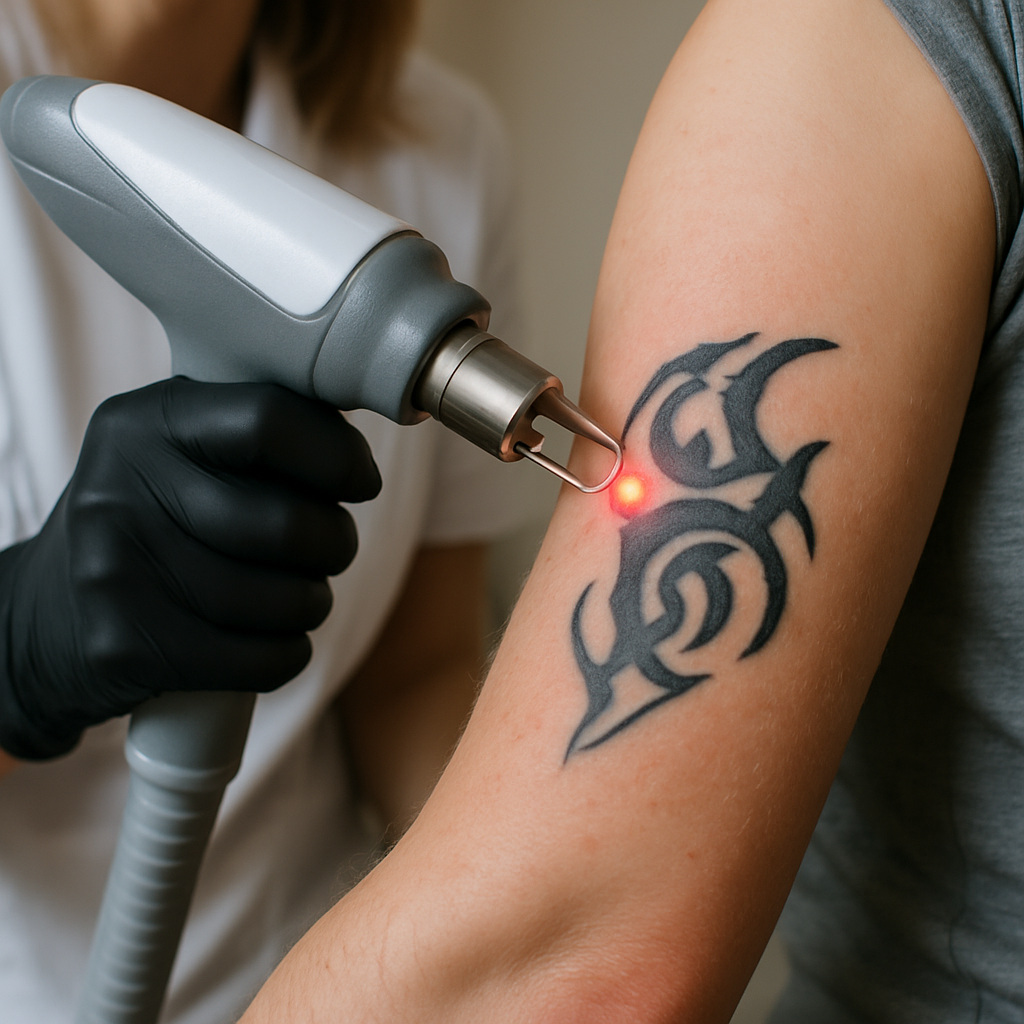
For more insights about the pain levels and technical details, check out this comprehensive Removery guide on tattoo removal pain or this helpful article by Healthline covering tattoo removal pain factors.
Comparing Laser Tattoo Removal Pain to Other Common Procedures
So, you’re wondering “is laser tattoo removal painful”—and honestly, that’s one of the first questions everyone asks. But pain is such a personal thing, right? What stings for one might be a breeze for another. Let’s break down how this stacks up against some other treatments you might already know or have actually experienced.
Think about laser tattoo removal like a sharp flick—kind of like a rubber band snapping against your skin but a bit more persistent. You get these quick pulses that feel intense in spots, especially where the tattoo ink is thick or your skin is sensitive.
Laser Tattoo Removal vs. Laser Skin Resurfacing
Comparing laser tattoo removal pain to laser skin resurfacing is a good place to start because both involve lasers but act differently on your skin. Skin resurfacing usually tackles wrinkles, scars, or pigment issues by targeting outer skin layers. Depending on the type you get—like ablative lasers that remove layers of skin—the discomfort can range from moderate to intense, sometimes needing numbing shots or sedation.
By contrast, laser tattoo removal typically doesn’t require sedation. It mostly feels like repeated snaps in one spot. Laser resurfacing pain can feel deeper and more widespread, especially if you go for aggressive treatments that peel off skin layers and mean a week or two of recovery. You might want to check out this detailed explanation about laser skin resurfacing sensations and care to get why recovery times and pain can spike there.
What About Microneedling or Chemical Peels?
Okay, now microneedling and chemical peels—they’re often mentioned as “less scary” alternatives for improving skin without surgery. Microneedling uses tiny needles to poke your skin, creating controlled micro-injuries that boost collagen.
Here’s the kicker: microneedling usually causes a prickly, scratchy feeling that’s uncomfortable but doesn’t have the sharp snap sensation you get with laser tattoo removal. Chemical peels? They can sting or burn depending on the peel’s strength, and some folks describe it like a strong sunburn after.
So, if you’ve been through any of these, laser tattoo removal pain is more of a focused, quick sting rather than hours-long discomfort. Plus, chemical peels might leave your skin red and raw for days, which isn’t usually the case with tattoo removal.
How Does It Stack Up Against Injections, Like Botox or Fillers?
Here’s a curveball. How painful is laser tattoo removal compared to injections like Botox or dermal fillers? Honestly, most people say the injections feel like a brief pinch or tiny needles piercing the skin. The irritation is fast but over quickly.
Laser tattoo removal, though, lasts longer during treatment sessions because it’s the laser pulses firing repeatedly. But the pain doesn’t usually linger much after the session ends, unlike some injection swelling or bruising.
Curious about managing soreness after laser treatments? Topical numbing creams or cooling devices are often used during these procedures to keep you comfy. And you can ask at Simcoe Cosmetic Clinic about tailored pain relief methods specific to your skin and pain tolerance.
Have you ever felt unsure whether a procedure is going to hurt more than it’s worth? Yeah, that feeling is totally valid. But knowing what to expect compared to stuff you’ve already dealt with can make all the difference.
Quick Side-by-Side: Pain Comparison Table
| Procedure | Pain Description | Duration & Recovery |
|---|---|---|
| Laser Tattoo Removal | Sharp, snapping pulses over tattooed skin; occasional stinging | Short pain during treatment; minimal lasting soreness |
| Laser Skin Resurfacing | Can be moderate to intense; burning or raw feeling, especially ablative lasers | Several days to weeks of redness, peeling, and healing |
| Chemical Peel | Burning or stinging, intensity varies by peel depth | Redness, peeling, possible discomfort lasting days |
| Microneedling | Prickly, scratchy sensation; less sharp than laser pulses | Mild redness, slight tenderness for a day or two |
| Botox/Fillers | Brief needle pinches; mild discomfort | Possible swelling or bruising for a few days |
If you’re weighing whether laser tattoo removal pain is something you can handle, think about what you’ve been through with other treatments. It’s often faster and more localized than you’d expect, and with the right clinic—like Simcoe Cosmetic Clinic—you get experts who help you prepare and stay supported through it.
So, does this help paint a clearer picture? If you want to dig deeper into what to expect, check out resources like the Removery insight on tattoo removal pain and Healthline’s helpful guide on pain factors to get even more perspectives.
Remember, your comfort during laser tattoo removal is a journey we can navigate together. Knowing what you’re stepping into, comparing it to what you already know, and asking all the right questions will set you up for success.
Techniques and Technologies That Reduce Pain During Laser Tattoo Removal
Wondering is laser tattoo removal painful? You’re not alone. It’s one of the first things people ask before booking their first session. The good news? Thanks to some smart tech and thoughtful techniques, the discomfort can be way more manageable than you might fear.
Modern Lasers That Make a Difference
Laser technology has come a long way. Gone are the days of blasting your skin with brute force pulses. Today’s advanced Q-switched and picosecond lasers work by delivering ultra-short bursts of energy that break down ink particles quickly and precisely. These newer machines not only speed up the process but tend to cause less collateral damage to surrounding skin — which means less pain and shorter recovery times.
Think of it like swapping out a sledgehammer for a scalpel. The laser targets ink pigments with surgical precision. This precision reduces the intensity of that burning or snapping sensation many dread during treatment.
Numbing Creams and Topical Anesthetics
Here’s a little insider tip: clinics like Simcoe Cosmetic Clinic often apply pharmacy-grade numbing creams before treatment. Applied about 30 to 60 minutes beforehand, these creams can soothe the skin’s surface, turning down the volume on stinging sensations.
Now, I’m not going to sugarcoat it — numbing creams mainly work on the surface skin, so if your tattoo ink is deep, some discomfort might still creep in. But a lot of patients swear they make a noticeable difference, helping get through sessions with less flinching.
Cool It Down: Ice Packs and Cryotherapy
Another simple but surprisingly effective trick is icing. Applying an ice pack before and after your laser session can numb the area, reduce swelling, and take the edge off that burning feeling.
Does it really work? Many folks compare laser tattoo removal pain to being snapped with a rubber band or having a mild sunburn — and ice is a classic remedy for both. So, yes, putting a cold pack on your skin beforehand isn’t just old-school advice; it’s science-backed common sense.
Advanced Pain Management: Injectables and Medication
For those who’ve got tattoos in tricky, sensitive spots — like ankles or ribs — or if you just have a lower pain threshold, there are options beyond creams and ice. Some clinics offer long-acting local anesthetics, such as Exparel, which can be injected to keep the area numb for hours or even days after treatment.
Plus, a word of caution: while taking over-the-counter painkillers like acetaminophen (Tylenol) before your session can soften discomfort, it’s best to avoid blood-thinning medications like aspirin or ibuprofen that might cause bruising.
Trust and Comfort: The Unsung Pain Relievers
Not to be underestimated: the vibe at your clinic and your rapport with the technician. Anxiety can turn up the volume on pain — literally. Feeling safe and relaxed can actually lower how much pain you perceive.
So, finding a place like Simcoe Cosmetic Clinic where technicians walk you through every step, answer your questions, and help you breathe through the tough spots can make a world of difference.
What’s Next? Finding Your Best Fit
If you’re still wondering how advancements in laser tech reduce pain, or looking for practical tips to ease discomfort during removal, it pays to do your homework.
Research clinics that offer free consultations, ask about their pain management protocols, and don’t hesitate to discuss numbing or sedation options upfront. It might feel like a lot, but the more prepared you are, the better your experience will be — and that’s what counts.
Preparing for Your Laser Tattoo Removal Session to Minimize Discomfort
Alright, so you’ve booked your laser tattoo removal session at Simcoe Cosmetic Clinic. You might be sitting there, wondering, “Is laser tattoo removal painful?” Honestly, it’s normal to feel a bit anxious. But here’s something that often gets overlooked: how much you prepare can make a big difference in your comfort level.
Think about it this way — it’s like prepping for a dentist appointment where you expect a shot. If you show up stressed and your skin isn’t ready, things just feel worse. But if you take a few simple steps beforehand, you can seriously soften the sting and make things go smoother.
Hydrate and Moisturize — Your Skin’s Best Friends
This might sound basic, but keeping your skin hydrated is one of the best things you can do. Dry skin tends to be more sensitive, so drinking plenty of water starting a few days before your appointment can help. Apply a gentle, fragrance-free moisturizer daily to keep your skin supple. No surprise, right?
It’s like getting your skin in the right shape to take a punch — or, in this case, a laser zap.
Hold Off on Sun Exposure
Here’s a big one: avoid tanning or sunburns for at least two weeks before your session. Sun-damaged skin is more vulnerable and prone to irritation, which can crank up discomfort during laser removal. Plus, a fresher, untanned skin tone helps the laser target the pigment more precisely, improving results.
It’s worth the hassle, trust me.
Skip Alcohol and Avoid Blood Thinners
Alcohol can dry out your body and increase sensitivity. And remember, medications like aspirin or ibuprofen can thin your blood, leading to more bruising or bleeding after treatment. As we mentioned earlier, sticking to over-the-counter pain relievers like acetaminophen (Tylenol) is the safer bet if you need something beforehand.
Talk with Your Technician About Numbing Options
Don’t be shy here. At Simcoe Cosmetic Clinic, the team is used to all sorts of questions about managing pain. They may offer topical numbing creams that you can apply before your session — or in some cases, injectables — to numb the area. Even something as simple as a cold pack right before treatment can dull the sensation.
Have you ever noticed how ice can take the edge off a bruise? Same idea. Pairing numbing strategies with good prep can make a world of difference.
Go Easy on Your Skin the Day Before
On the day leading up to your appointment, skip harsh skincare products like retinol or acids. Your skin needs to be calm, not angry. Also, avoid shaving directly over the tattoo if possible, because tiny nicks might add irritation.
And here’s a small but mighty tip: get a good night’s sleep. When you’re rested, your body handles discomfort better.
Wondering if all this really helps? According to experts in laser tattoo removal, prepping your skin and body carefully reduces not just pain but speeds up healing. And personalized skin care clinics stress that a calm, nourished skin surface is the best canvas for laser work.
So, when you’re asking yourself, “Is laser tattoo removal painful?” remember, you’re not just showing up to get blasted by a laser. You’re teaming up with your technician by prepping your skin, your body, and your mindset.
And that partnership? It’s what really helps minimize discomfort and get you closer to saying goodbye to that tattoo with less fuss.
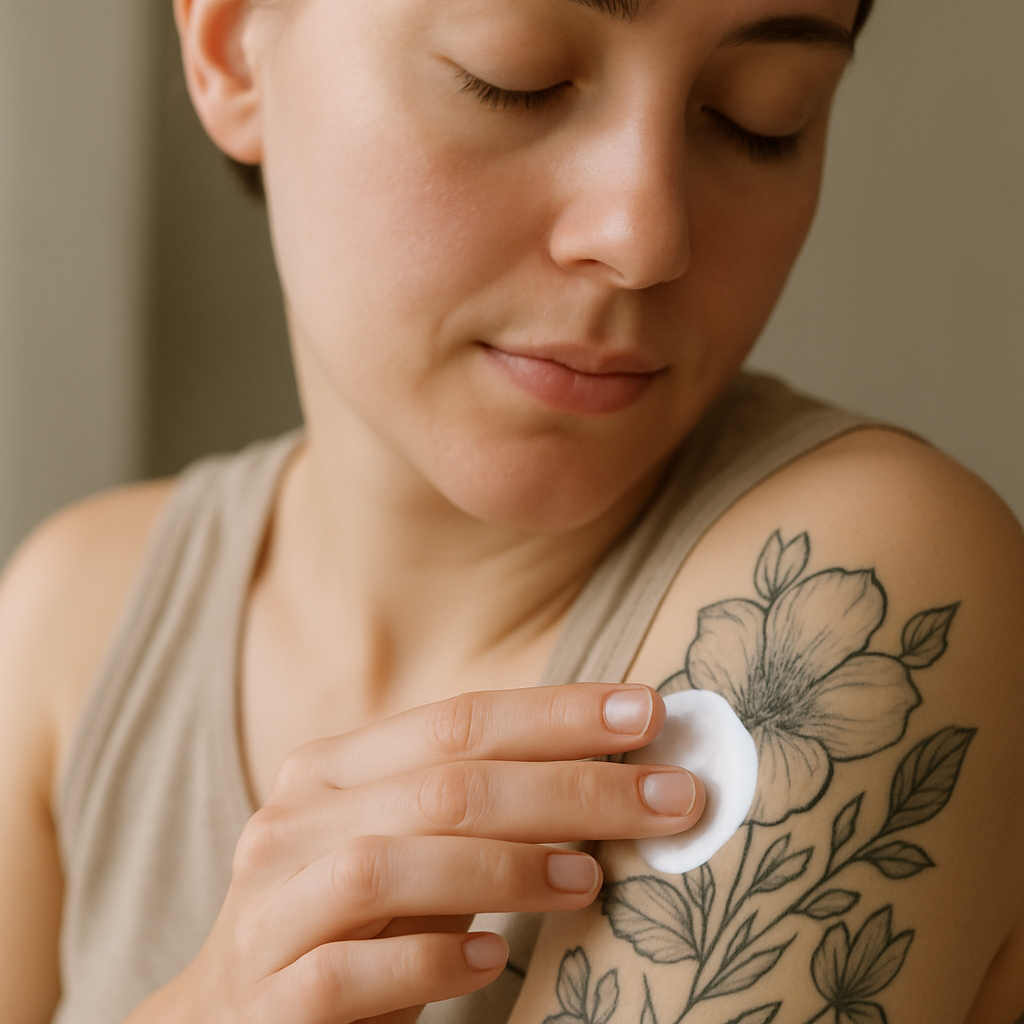
Aftercare and Managing Pain Between Laser Tattoo Removal Sessions
So, you’ve just walked out of your laser tattoo removal session. Your skin’s probably a bit red, maybe a little tender or swollen—totally normal stuff. But here’s the real struggle: what happens between those sessions? How do you keep the pain in check and help your skin bounce back without fuss?
First off, managing pain between sessions isn’t just about numbing the discomfort—it’s about giving your skin the TLC it’s begging for. The laser breaks down ink pigments by essentially shaking things up inside your skin. This process can leave your skin feeling sunburned or sensitive for a few days. That’s where good aftercare steps in, like a trusty friend who’s got your back.
Ice Packs: Your Best (And Coolest) Ally
Think of ice packs as a mini ice bath for your skin. Applying a cold compress gently for 10-15 minutes right after your session helps calm down inflammation and reduces that sting. You can repeat this a few times a day, keeping that swelling and redness in check.
Just be sure not to apply the ice directly—wrap it in a clean cloth to avoid frostbite. Simple stuff, but wow, does it make a difference.
Moisturize Like You Mean It
Now here’s a little secret that some folks overlook: moisturization can be a game changer. Your skin needs to stay hydrated to heal quickly and avoid flaking or itching.
Pick a gentle, fragrance-free moisturizer—nothing fancy, just soothing. At Simcoe Cosmetic Clinic, we always recommend following your practitioner’s suggestions because keeping that skin barrier strong means less discomfort overall.
Over-the-Counter Pain Relief: When to Take It
Wondering if popping a painkiller is a good idea? Often, taking ibuprofen or acetaminophen after your session can help dull the pain and reduce swelling. Just double-check with your doctor if you have any health concerns or allergies.
And if the pain feels more than mild irritation, chat with your technician. They might suggest topical numbing creams like lidocaine, which many clinics use to ease discomfort both before and after treatment. These block the nerves from sending pain signals, a clever little hack when the sensitivity’s high.
Keep That Tattoo Area Clean—and Hands Off!
It sounds obvious, but resisting the urge to scratch or pick at your treated skin is crucial. Your body might want to peel or scab—let it do its thing without interference. Clean the area gently with lukewarm water and mild soap, then pat dry softly.
If you notice blistering or unusual signs like pus or extreme redness, it’s a good idea to call your provider. Infection is rare but can happen if your skin isn’t cared for properly.
Patience Is Part of the Process
Here’s the tough pill: you’ll need to wait about 6 to 8 weeks between sessions to give your body time to flush out the broken-down ink. During that time, managing the minor discomfort becomes your focus, not rushing to the next treatment.
Why? Because healing well now means better, safer results later—that’s what smart aftercare is all about.
If you want the deep dive on recovery tips and how to handle laser tattoo removal pain better, there’s a great guide here, packed with advice from pros who’ve seen it all.
Also, this laser tattoo removal resource offers practical pain management tips like numbing creams and icing strategies that can really take the edge off when sessions feel intense.
So yes, is laser tattoo removal painful? It can be. But armed with the right aftercare and a little patience, you’re definitely in control of the experience.
Take care, listen to your skin, and you’ll get through those intervals with a lot less hassle than you might expect.
FAQ
Is laser tattoo removal painful for everyone?
Honestly, pain tolerance varies a ton from person to person. Some folks say it feels like tiny rubber bands snapping against their skin, while others describe sharp, stinging sensations. And then, there’s the area of your tattoo—thinner skin or places with less padding can definitely hurt more.
So, is laser tattoo removal painful? It can be, but not everyone ends up dreading it. If you’ve ever endured a fresh tattoo outline, you might find the removal feels kind of familiar—just in reverse.
What factors make the pain worse or better?
Great question. First off: the color and density of your tattoo mess with how much discomfort you’ll feel. Dark, thick inks absorb more laser energy, which means they might sting more during treatment. Old tattoos can sometimes take longer but may feel less intense because your skin has adapted over time.
Then there’s the laser type and operator skill—trust me, a pro who knows what they’re doing will make it way more manageable. Plus, your clinic might offer numbing options or cooling methods that make a huge difference.
Are there ways to manage the pain during and after the session?
Definitely! Most clinics, including places like Simcoe Cosmetic Clinic, use topical numbing creams before the procedure. Ice packs and cooling devices during and after the session help a lot too. And yes, pacing yourself with the right amount of time between treatments helps your skin heal—it’s a marathon, not a sprint.
It’s also smart to avoid sun exposure and keep your skin moisturized after, which minimizes irritation and soreness.
How long does discomfort usually last after each session?
Usually, the soreness sticks around for a day or two—think of it like a mild sunburn. You might notice some redness, swelling, or tenderness, but these go away fairly quickly with proper care. Scaling or itching might pop up too, which is just part of your skin’s natural healing.
It basically means your body is kicking old ink to the curb.
Can laser tattoo removal pain cause any serious problems?
It’s pretty rare for pain itself to cause serious issues but ignoring aftercare or pushing through too many sessions too fast can lead to infection, scarring, or changes in skin color. Pay close attention to what your provider tells you after each session and don’t hesitate to communicate if something feels off.
Better safe than sorry, right?
What should I do if the pain feels unbearable?
Stop and talk to your provider ASAP. They can adjust laser settings, suggest stronger numbing options, or recommend alternative approaches. You’re in control here. It’s your skin, your comfort, and your journey.
Remember, enduring pain isn’t some badge of honor—it’s about feeling safe while getting the results you want.
Is there really a way to know if laser tattoo removal is painful for me before starting?
Well, the closest you can get is asking for a patch test—many clinics do this to see how your skin reacts and how much discomfort you might expect. It’s like dipping your toe in rather than jumping straight into the deep end.
So yeah, if you’re curious but nervous, a patch test lets you get a feel without committing to a full session right away.
Your questions matter, and finding a provider who listens makes all the difference.
Conclusion
So, is laser tattoo removal painful? Well, the honest answer is—it depends. You, your tattoo, the spot, even your mood that day all play a role. But here’s the thing: pain shouldn’t scare you off, especially if you go in prepared and listen to your body.
Think about it this way—removing a tattoo isn’t a walk in the park, but it’s far from unbearable. And the few moments of discomfort? They fade fast, leaving you one step closer to fresh, clear skin.
What really makes the difference is the aftercare and finding the right provider who talks to you, adjusts when necessary, and respects your limits. At Simcoe Cosmetic Clinic, we get it—this is your skin and your story. You deserve to feel safe and cared for during every session.
So, if you’re wondering how to tackle this journey with less guesswork, start with a patch test, keep the lines of communication wide open, and don’t rush. Your skin will thank you.
Ready to take the next step? Reach out, ask your questions, and create a plan that fits you perfectly. Because laser tattoo removal doesn’t have to be painful—it just has to be right for you.

